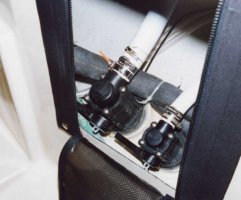Sven
Seglare
We're about to select a yard to haul La Petite, apply a good bottom coat, and replace the three through-hulls.
What is the collective wisdom about what brand and style of through-hulls and what material should they be made out of ?
I've seen several references to the undersized cockpit drain on the E23 and I've definitely noticed it myself, so I'm tempted to tackle that issue at the same time. Any suggestions or pointers to cockpit drain upgrades which others have carried out ?
Thanks,
-Sven
What is the collective wisdom about what brand and style of through-hulls and what material should they be made out of ?
I've seen several references to the undersized cockpit drain on the E23 and I've definitely noticed it myself, so I'm tempted to tackle that issue at the same time. Any suggestions or pointers to cockpit drain upgrades which others have carried out ?
Thanks,
-Sven

